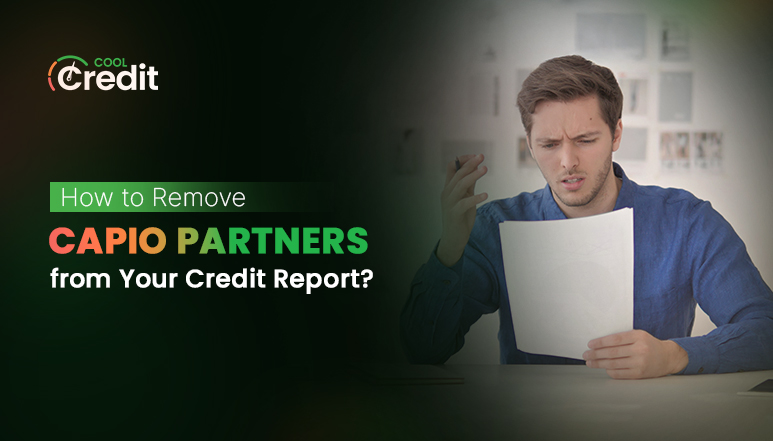
Subsidized vs Unsubsidized Loans: Know the Key Differences
Paying for college isn’t easy, and loans are part of the journey for many students. Federal student loans come in two primary forms: subsidized and unsubsidized. At first glance, they might seem similar, but how they work, especially when it comes to interest, can make a big difference over time.
Don’t Just Monitor—Repair with AI Now!
Tap to BeginSubsidized vs Unsubsidized: What You Need to Know Before You Borrow
Whether you’re beginning your financial aid journey or weighing your loan options, understanding how these two types differ can ease your decision-making and your future budget.
This guide will walk you through what each loan type means, how they compare, and how to choose the right fit for your situation. Whether you’re a college student, a graduate student, or a parent helping out, this breakdown will make it easier to navigate your options.
What Is a Subsidized Loan?
A subsidized loan is a government initiative to support students who need financial assistance to pay for college. The best part? The government pays your interest while you’re in school, during your six-month post-grad grace period, and if you ever hit pause on payments (aka deferment).
How It Works
Imagine you take out a loan to cover your college costs. Normally, interest starts adding up as soon as the funds are released. But that’s not the case with a subsidized loan. While you're in school, the government takes care of the interest for you.
Who Can Get One?
You’ll have to meet a few key requirements to qualify for a subsidized loan. First, you must be an undergraduate student. You also need to be enrolled in school at least half-time. And most importantly, you have to complete the FAFSA and demonstrate financial need based on your family’s income and other factors.
Why the Government Paying Interest Is a Big Deal
Interest is like an expense that grows in the background while you’re focused on classes, exams, and just getting through college. But with subsidized loans, the government takes care of that interest while you’re in school and even during the grace period after graduation. That means when it’s time to start paying the loan back, you’re not already facing a bigger balance than what you originally borrowed.
Why Subsidized Loans Are Worth It?
- They save you money. No interest = less to pay back later.
- They buy you time, and you can concentrate on your studies without stressing about making payments.
- They’re less stressful. When you start paying them off, your balance isn’t higher than what you originally borrowed.
What Is an Unsubsidized Loan?
An unsubsidized loan is a type of federal student loan that’s pretty accessible, you don’t need to prove financial need to get it, which makes it a solid option for a lot more students. These loans are available to undergraduate and graduate students, the big difference is how interest works.
How Interest Works: It Starts Right Away!
With unsubsidized loans, the interest starts stacking up the moment the money hits your account, even while you're still in school. If you don’t pay that interest as it builds, it doesn’t disappear. Instead, it gets added to your loan total when it’s time to start repaying, which means you could end up owing interest on the interest that’s already stacked up.
Who Can Get One?
The good news is that unsubsidized loans are open to more students. Whether or not you qualify for financial aid, you can still apply. To be eligible, you must:
- Be enrolled at least half-time in a qualifying program.
- Fill out the FAFSA.
- Be a U.S. citizen or eligible noncitizen, meeting general federal aid requirements.
Subsidized vs. Unsubsidized Student Loans: Which Should You Choose?
| Feature | Subsidized Loan | Unsubsidized Loan |
| Who can apply | Undergraduate students with financial need | Undergraduate and graduate students |
| Based on financial need? | ✅ Yes | ❌ No |
| Interest while in school | ❌ No interest accrues (government pays it) | ✅ Interest starts building immediately |
| Interest during the grace period | ❌ No interest (still covered by government) | ✅ Interest continues to accrue |
| Interest during deferment | ❌ Government pays interest | ✅ You’re responsible for all interest |
| Loan limits | Lower compared to unsubsidized loans | Higher loan limits, especially for grad students |
| Availability to grad students | ❌ Not available | ✅ Yes, grad students can apply |
| When repayment starts | After school + grace period | Same as subsidized, but with more interest accrued |
| Best for | Students who qualify for aid and want to reduce debt | Students who don’t qualify for subsidized loans but still need funding |
| Smart Borrowing Tips ▪ Only borrow what you truly need - Just because you’re approved for a certain loan amount doesn’t mean you’re required to accept the full sum. ▪ Keep track of your total loans – You can use the Federal Student Aid website to check how much you owe. ▪ Pay off interest early - This is especially with unsubsidized loans, since that interest doesn’t wait to start piling up. ▪ Know your repayment choices – After graduation, you’ll have options—pick the one that fits your income and lifestyle. ▪ Check for forgiveness programs – You may be pardoned for paying the remaining amount under Public Service Loan Forgiveness (PSLF). |
Beyond Federal Loans: Smart Alternatives to Subsidized and Unsubsidized Student Loans
Subsidized and unsubsidized loans aren’t the only way to pay for school. If you're trying to avoid piling on debt, there are smarter, more flexible options out there. From free money like grants and scholarships to work-study gigs and payment plans that don’t charge interest, here are five solid ways to cover college costs without getting buried in loan payments later.
| Option | What It Is | Pros | Considerations |
| Scholarships & Grants | Free money from the government, schools, or organizations | ▪ No repayment ▪ Wide variety available ▪ Can stack multiple awards | ▪ Competitive ▪ Requires research and applications ▪ May require renewal |
| Work-Study Programs | Part-time job (on/off campus) through federal aid | ▪ Earn while you learn ▪ Doesn’t increase debt ▪ Flexible schedules | ▪ Limited hours ▪ Must qualify via FAFSA |
| State/School-Specific Aid | Financial aid from your state or school | ▪ May be automatically applied ▪ Can combine with federal aid | ▪ Eligibility varies by location and school ▪ May require a separate application |
| Private Student Loans | Money borrowed from banks, credit unions, or online lenders | ▪ Can fill funding gaps ▪ Multiple lender options ▪ May offer deferment options | ▪ Higher interest rates ▪ Needs a creditworthy co-signer ▪ Less flexible |
| Tuition Payment Plans | Breaks tuition into monthly payments, interest-free | ▪ No interest ▪ Helps with cash flow ▪ Avoids lump-sum burden | ▪ May have setup fees ▪ Doesn’t cover all expenses ▪ Missed payments = fees |
How CoolCredit Helps Students Repair and Build Credit
CoolCredit is an AI-driven app that helps students build and repair their credit in a practical and accessible way. Here’s how it supports student credit health:
- Early Credit Building
CoolCredit helps students build good credit while still in school, laying the groundwork for big life steps like getting an apartment, buying a car, or landing a job. - Credit Booster Plans
Through structured payment plans, students can actively raise their credit scores, making credit building safe and sustainable. - Dispute and Repair Tools
CoolCredit provides easy-to-use tools and templates that guide students through spotting and disputing errors on their credit reports, which can help clear up outdated or incorrect information that might be dragging their score down. - Real-Time Credit Monitoring
CoolCredit provides instant alerts for changes in a student’s credit report, allowing for prompt action if any errors or suspicious activity arise. - Comprehensive Dashboard
The intuitive dashboard shows important credit details like your score history, usage, and payment habits, so you can easily monitor your progress and stay on top of your credit. - Actionable Credit Insights
CoolCredit delivers personalized recommendations and educational resources, helping students make smarter decisions and improve their financial literacy over time.
Better Credit, Backed by AI—Start Your Fix Today!
Get StartedFinal Thoughts: Making the Right Choice on Subsidized or Unsubsidized Loans
When choosing between subsidized and unsubsidized student loans, the right option depends on your financial need, long-term goals, and how much debt you’re comfortable managing after graduation. If you qualify for subsidized loans, they’re generally the smarter choice because the government takes care of the interest while you're in school. If you need more help covering college costs, unsubsidized loans can still be useful—just remember that interest adds up from the start.
As you take charge of your education and financial future, tools like CoolCredit can be a great support. With its AI-powered features, it helps students track, build, and safeguard their credit while they’re still in school. Building strong credit early can set you up for success after graduation.
FAQs
Q: Can Grad Students Get Subsidized Loans?
A: Unfortunately, no. Graduate and professional students are only eligible for unsubsidized federal Direct Loan Program loans.
Q: Subsidized or Unsubsidized Loans - Which Loan Is Better for Long-Term Savings?
A: Subsidized loans are better for long-term savings. The government covers interest while you're in school, during the grace period, and deferment, reducing the total cost of your loan. Unsubsidized loans accrue interest from early on.
Q: Can My Parents Take Out These Loans for Me?
A: Yes, they can. Parents of dependent undergrads can apply for a Direct PLUS Loans, a federal loan created to help cover their child’s education costs.





